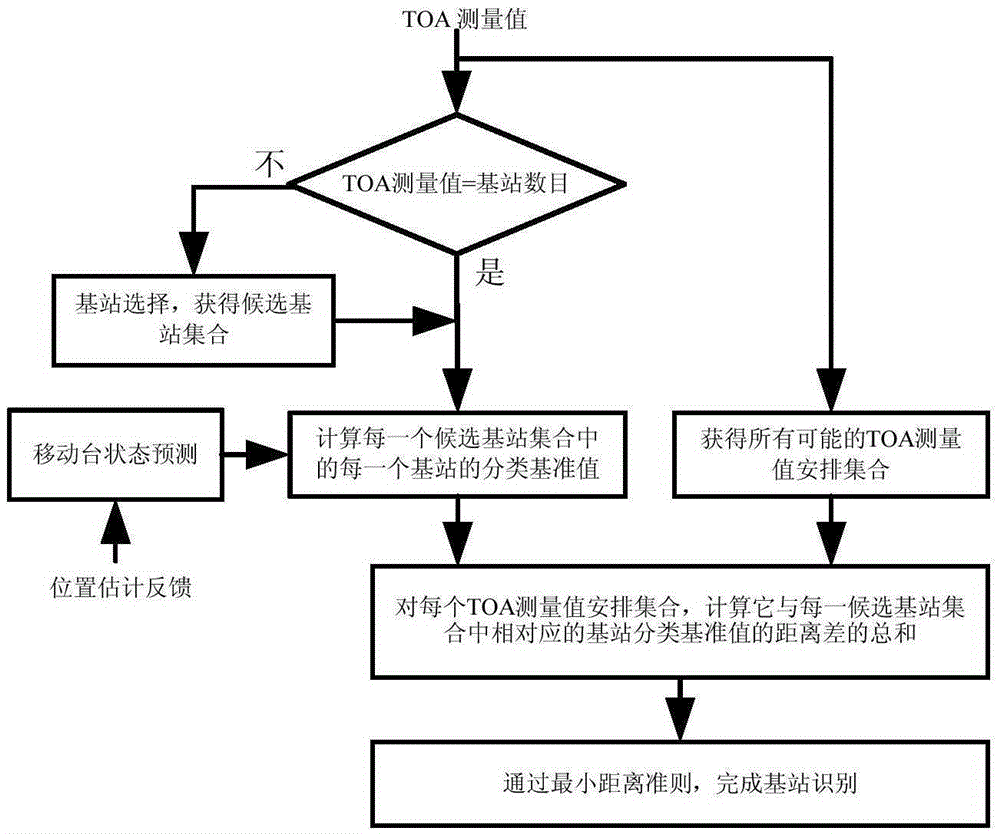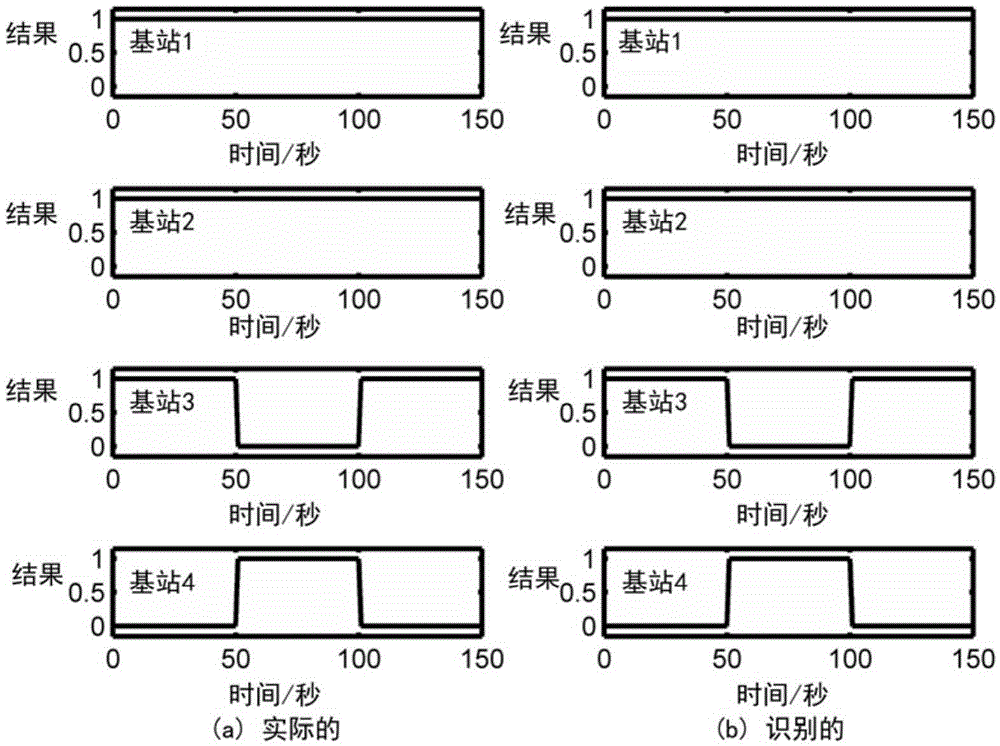A base station identification method in a single frequency network positioning system
A positioning system and identification method technology, applied in the field of communication positioning, can solve the problem that mobile stations cannot identify signals, etc., and achieve the effect of reducing non-line-of-sight effects and reducing hardware requirements
- Summary
- Abstract
- Description
- Claims
- Application Information
AI Technical Summary
Problems solved by technology
Method used
Image
Examples
Embodiment Construction
[0036] A base station identification method in a single frequency network positioning system of the present invention will be described in detail below in conjunction with the accompanying drawings.
[0037] Such as figure 1 As shown, the base station identification method in a single frequency network positioning system of the present invention, because the non-line-of-sight NLOS mitigation algorithm position estimation algorithm is a common algorithm, and the state prediction model is also a conventional technology in radar signal processing. The use of the minimum distance classifier for base station identification will be described in detail below.
[0038] The flow chart of the minimum distance classifier for base station identification is as follows figure 2 shown. Assuming that the obtained TOA measurement value and the number of prior DTV base stations stored in the receiver are N and M respectively, the specific implementation steps are as follows: (1) According to...
PUM
 Login to View More
Login to View More Abstract
Description
Claims
Application Information
 Login to View More
Login to View More - R&D
- Intellectual Property
- Life Sciences
- Materials
- Tech Scout
- Unparalleled Data Quality
- Higher Quality Content
- 60% Fewer Hallucinations
Browse by: Latest US Patents, China's latest patents, Technical Efficacy Thesaurus, Application Domain, Technology Topic, Popular Technical Reports.
© 2025 PatSnap. All rights reserved.Legal|Privacy policy|Modern Slavery Act Transparency Statement|Sitemap|About US| Contact US: help@patsnap.com



